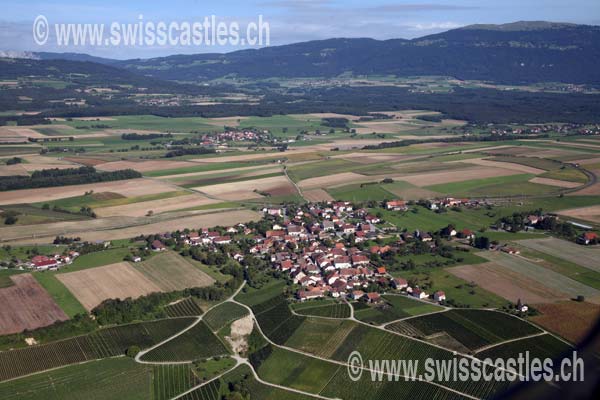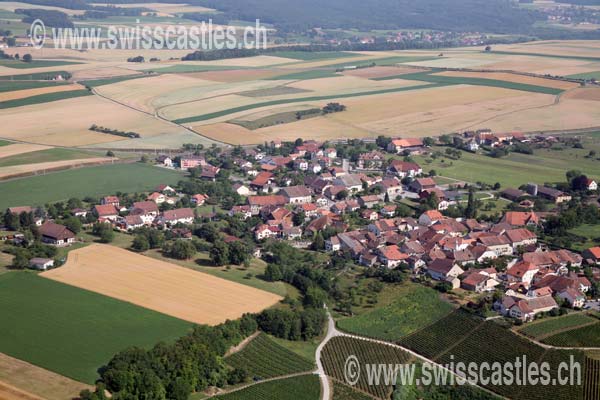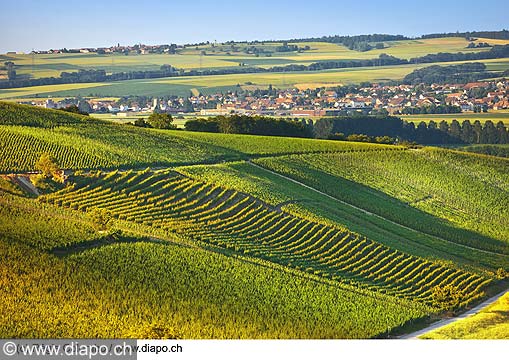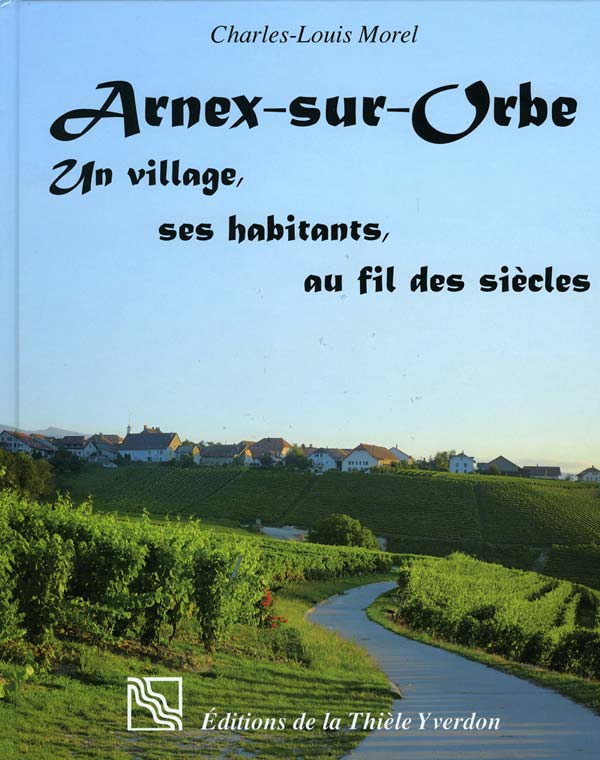Arnex-sur-Orbe
Arnex -sur -Orbe is a municipality in the district of Jura-Nord Vaudois in the canton of Vaud in Switzerland.
Geography
Arnex -sur -Orbe is at 543 m above sea level. M., 3 km south-southwest of the town Orbe and 13 km southwest of the district capital Yverdon- les- Bains ( straight line ). The scattered village extends on the Swiss plateau on the eastern edge of the Jura plateau, about 100 m above the level of Orbe (French Plaine de l' Orbe ).
The area of 7.6 km ² large municipality area includes a portion of the average in the range of Arnex -sur -Orbe to 550 m above sea level. M. lying Jura plateau. To the west of the municipality extends floor to the Cret de la Croix (580 m above sea level. M. ) and in the forest Bioute, on the edge of some nature reserve pond located ( including the Etang d' Arnex ). In a small corner of the area extends to the southwest on the collection of Le Chaney ( 614 m above sea level. Highest elevation of Arnex -sur -Orbe ) to the river Nozon, which here runs in a 100 m cut into the foot of the Jura plateau valley. The southeast border is a tributary of the Nozon. In the east Arnex -sur -Orbe has a small share of the Orbeebene, forms the eastern boundary of the canal Entreroches. From the municipality surface 1997 6 % came from settlements, 20 % of forest and shrubs, 73% to agriculture and slightly less than 1% was unproductive land.
To Arnex -sur -Orbe include some individual farms. Neighboring communities of Arnex -sur -Orbe Orbe are, Agiez, Bofflens, Croy, La Sarraz Pompaples, Bavois and Chavornay.
Population
With 578 inhabitants ( 31 December 2012) Arnex -sur -Orbe one of the smaller municipalities in the canton of Vaud. Of the 94.0 % inhabitants are French-speaking, German-speaking 2.1 % and 1.7 % portugiesischsprachig (as of 2000). The population of Arnex -sur -Orbe amounted in 1850 to 621 residents in 1900 to 612 inhabitants. This was followed up to 1970 (457 inhabitants) a decline in population. Since then, a slight upward trend was observed again.
Economy
Arnex -sur -Orbe is a dominantly agricultural village today. Thanks to the fertile lands on the foot of the Jura plateau agriculture is predominantly operated. On the slopes below the village on the edge of Orbeebene vines are planted (about 65 hectares of vineyards ). More jobs offers local small businesses. In recent years, Arnex -sur -Orbe has developed into a residential community. Many workers are therefore commuters who work mainly in Orbe.
Traffic
Although the community is located off the major thoroughfares, but is still quite easy to reach, since the terminals are located at the A1 and A9 only about 5 km. On 1 July 1870, the railway line was Cossonay - Vallorbe taken with a station in Arnex -sur -Orbe in operation. By Postbus course Arnex -sur -Orbe Orbe is connected to.
History
Finds from the Neolithic period ( in Nozon Valley), from the Roman period and the early Middle Ages ( graves ) point to an early settlement of the municipality. The first written mention of the village was carried out in 1049 under the name Arniacum; 1228 appeared the name Arnei. The place name probably derives from the Latin personal name Arnius.
Arnex -sur -Orbe came in 1049 by gift of Adalbert of Grandson to the monastery Romainmôtier. The interests of the monastery were henceforth represented by a resident in Arnex -sur -Orbe Meier. With the conquest of Vaud by Bern in 1536, the village came to Kastlanei and bailiwick Romainmôtier. After the collapse of the ancien régime Arnex -sur -Orbe belonged from 1798 to 1803 during the Helvetic Republic to the canton of Geneva, who came up then with the enactment of the Act of Mediation in the canton of Vaud. It was 1798, the district allocated Orbe.
Attractions
The village church Saint -Martin was first mentioned in 1228. The medieval chancel dates from the 14th century, the nave, for the most part of the 18th century. The Castle of Arnex -sur -Orbe, former seat of the Meiers, was built in the 17th century. In densely populated old town center of the wine-growing village of some characteristic farmhouses from the 17th to 19th centuries have been preserved.








